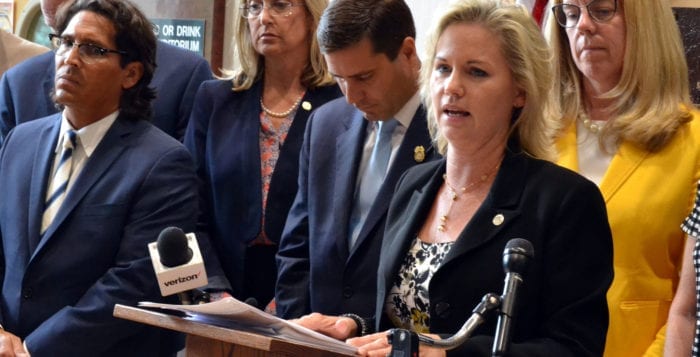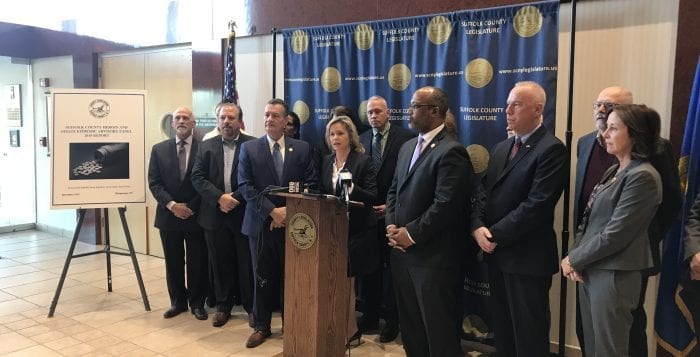Suffolk County’s 2020 annual report on the lingering opioid crisis showed an increase in the number of overdoses from the previous year, with experts expressing concern for the impact the pandemic has had on addiction rates.
The Suffolk County Heroin and Opiate Epidemic Advisory Panel released its findings Dec. 29 showing there were 345 fatal overdoses in 2020, which includes pending analysis of some drug overdose cases, according to the county medical examiner’s office. While, on its face, that number did not increase over the past year, nonfatal overdoses climbed by 90 to 1,208, com-pared to 2019, according to Suffolk County police. This increase defies a general trending de-crease in nonfatal overdoses since 2017. Police also reported 910 opioid overdose-antidote na-loxone saves for individuals compared to 863 in 2019.
In some ways more worrying than overall overdose numbers has been the treatment situation on the ground, with professionals in the field reporting an increase in relapses during the pan-demic, according to the report.
Numbers released by police after a May inquiry from TBR News Media showed overdoses were up dramatically when comparing months before the start of the shutdown orders in March to the weeks directly afterward. Medical experts and elected officials all agreed that pandemic-related anxiety, plus the economic downturn and mandated isolation led to increased drug use overall. People in the treatment industry have also said the pandemic has pushed them toward utilizing telehealth.
Legislator Sarah Anker (D-Mount Sinai), the panel chair, said COVID-19 has led to challenges among all county governmental and community agencies, with “overwhelmed hospitals fighting on the frontline, addiction rates skyrocketing with limited resources and economic un-certainty due to business disruption.”
There have been 184 deaths related to opioids in 2020, according to the report, with 161 poten-tial drug overdoses still pending review. Among the North Shore towns, not accounting for those still in review, there were 18 deaths reported in Huntington, 13 in Smithtown and 69 in Brookhaven, the latter of which had the most opioid-related deaths of any Suffolk township. Police data also shows the 6th Precinct bore the brunt of the most overdoses and the most Narcan saves.
National data also bears a grim toll. According to the U.S. Centers for Disease Control and Pre-vention’s National Center for Health Statistics there has been a 10% increase in drug overdose deaths from March 2019 to March 2020. Approximately 19,416 died from overdoses in the U.S. in the first three months of 2020, compared to 16,682 in 2019.
In addition to Suffolk’s report, the advisory panel has sent letters to state and federal reps ask-ing them not to cut any state funding for treatment and prevention and for the state to sup-port provider reimbursement rates for telehealth and virtual care that are on par with face-to-face rates. They also requested that New York State waives the in-person meeting requirement for people to receive buprenorphine treatment, which can help aid in addiction to painkillers.
County legislators are also touting a new youth addiction panel, which is set to begin meeting in the new year. The county is also continuing its lawsuits against several pharmaceutical com-panies for their hand in starting the opioid epidemic.
That’s not to say there haven’t been other setbacks in Suffolk’s efforts against opioids. Last Oc-tober, county Legislator William “Doc” Spencer (D-Centerport) was arrested for an alleged at-tempt to trade oxycodone for sex. Spencer was the one to initiate the creation of the youth panel. He has pleaded not guilty, though he has stepped down from his position on the panel, among other responsibilities.
There are currently 29 members on the opioid advisory panel, including representatives from the county Legislature, law enforcement, first responders, treatment centers and shelters.
While Anker thanked current members of the panel for their continued efforts, she said more work is needed.
“The opioid epidemic is an ongoing issue that needs to be addressed continuously from all fronts,” she said.






